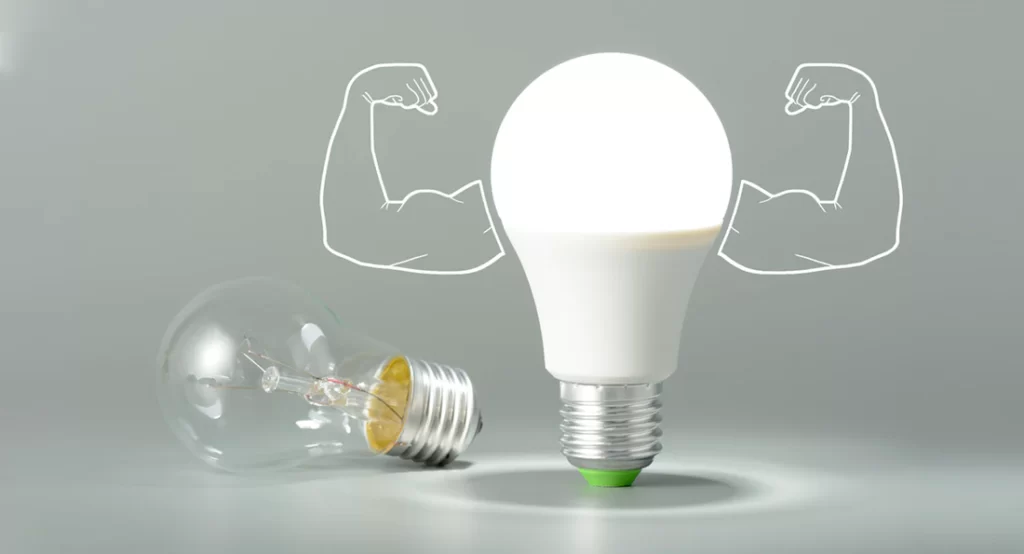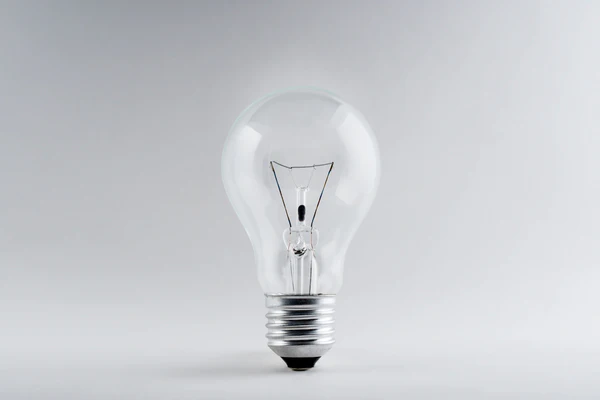Contact us for quotation
Let's have a chat
Let's have a chat
It’s a common misconception that LEDs don’t produce UV rays. Numerous studies and research have confirmed that LEDs emit UV rays and optical radiation, albeit in a minute quantity. The UV radiation from an LED bulb is so minuscule it’s almost negligible. LED radiation is typically benign, though excessive exposure to an LED bulb can pose a risk. The phosphor found within LED lights facilitates the creation of white light, during which a slight amount of UV is also generated.

Substantial research regarding LED lights and ultraviolet radiation concludes that LEDs do not emit a level of UV radiation sufficient to cause health issues or damage the color integrity of items such as paintings or furniture.
Having clarified that the UV radiation emitted by LEDs is very small, the next logical question is whether this UV radiation is harmful. In this article, we’ll delve deeper into the nature of Ultraviolet Rays, radiation, and various types of lights known to generate UV rays.
UV rays, otherwise known as ultraviolet rays, are invisible emissions from the sun that contribute significantly to its energy. There are two main types, UVA and UVB, which form the ultraviolet radiation reaching the Earth’s surface. Artificial sources of ultraviolet radiation include sun lamps and tanning beds. Exposure to UV rays can lead to harmful effects like skin cancer, melanoma, premature aging, and other skin issues. It can also have potential impacts on the immune system and eyes. Dermatologists and skin care experts recommend sunscreens to protect the skin from UV radiation. Furthermore, medical ultraviolet radiation from specialized lamps or lasers is utilized to treat certain skin conditions such as psoriasis, vitiligo, and cutaneous T-cell lymphoma.
Radiation represents energy emanating from a source that travels through space and can penetrate various materials. Forms of non-ionizing radiation include microwaves, radio waves, and light. This energy can be disseminated as particles or waves through a process known as radiation, which can take the form of light, heat, or sound. The term ‘radiation’ is often used to refer to electromagnetic waves such as radio, visible light spectrums, and gamma waves.
Ultraviolet (UV) radiation, despite being invisible to the human eye, can cause certain materials to fluoresce—namely, to produce lower-energy electromagnetic radiation like visible light—upon contact. Discrete ultraviolet radiation is produced by atomic excitation in a gaseous discharge tube, while continuous ultraviolet radiation comes from high-temperature surfaces like the sun. Oxygen in the atmosphere absorbs most of the sun’s UV rays, forming the lower stratospheric ozone layer. Nearly all (99%) of the ultraviolet energy reaching the Earth’s surface is UVA radiation.
Most LED light bulbs, including those used in industrial applications, do not emit UV radiation. Early versions of LED lighting lacked this capability due to their inability to emit white light. With the development of white light LEDs, this situation has evolved. Creating white light bulbs involves coating brilliant blue LEDs with phosphor, which absorbs the blue light and allows only the white light to shine through.
While most LED lighting does not emit UV light, brilliant blue LEDs emit a minuscule amount. However, the phosphor effectively diminishes this to a negligible fraction of the already small amount. This characteristic eliminates the need for a filter, making LEDs suitable for photosensitive environments.
The absence of UV light is one of many reasons why LED lighting is superior to high-intensity discharge bulbs.
Indeed, they emit considerable radiation in the form of visible light that our eyes perceive as white.
However, this doesn’t fall within the X-ray or gamma regions of the electromagnetic spectrum, meaning it is not ionizing and thus isn’t harmful until it reaches a level where it could function as a laser and ignite objects. As the name suggests, ionizing radiation creates ions, leading to potential damage to your body by instigating unplanned chemical reactions within your cells’ nucleus. Nonetheless, LED lighting is safe as it doesn’t reside within this wavelength range.
One of the ways UV radiation can harm us is by damaging the DNA in our cells. This can lead to cancer. But since UV rays are not strong enough to penetrate deep into our bodies, the main effect is only on the skin. Thus, exposure to UV rays can cause skin cancer.
The cornea of our eyes can absorb high doses of UV light. They are very sensitive to UV radiation. This can make the cornea cloudy, a condition known as snow blindness. Other effects of exposure to UV radiation are cataracts, macular degeneration, and corneal damage. This can ultimately lead to blindness.
Color degradation is another concern with UV rays. Because of UV emissions, damage can be caused to carpets, painted surfaces, shades, and more. They also weaken plastics and are damaging to plants and animals. UV radiation from light sources also attracts different kinds of insects.
We first need to understand that LEDs cannot emit white light. Lights that LEDs can produce are the three primary colors of red, blue, and green, and the different shades of these colors. But they cannot produce white light.
Brilliant blue lights were created in 1993. Brilliant blue LEDs are the only ones that produce substantial UV light. Scientists discovered that when brilliant blue LEDs are coated with phosphor, the UV light is converted to white light.
Halogen lamps function at incredibly high temperatures, releasing substantial UV radiation. Because of this, halogen bulbs necessitate specialized filters and housings. If UV radiation exposure worries you while using fluorescent lamps and fixtures, consider switching to LED lamps and fixtures. Contemporary LED bulbs do not produce UV radiation.

These are the most prevalent light bulbs in homes and emit a trivial amount of UV light. The UV light emitted by incandescent bulbs is so slight that it has no discernible effect on human health. They neither cause skin burns nor facilitate vitamin D absorption in humans or animals. These lights primarily discharge UVA rays.
Compact fluorescent bulbs and fluorescent tube lighting are the two most commonly used fluorescent light sources in residential and commercial buildings. Both of these emit more UV light than traditional incandescent bulbs. Despite the UVA radiation from these bulbs being too weak to cause immediate effects such as sunburn or eye discomfort, some experts express concern about potential long-term health impacts.
The UVB rays from sunlight help living organisms absorb vitamin D and combat diseases like seasonal affective disorders. However, excessive UVB sunlight can be harmful to your skin. UVB bulbs, frequently known as reptile basking lights, are often sold in pet stores and emit considerably more UV rays than either fluorescent or incandescent bulbs. Like pet stores, these bulbs are commonly used in homes as supplemental lighting for reptiles and amphibians, as these creatures need UVB rays for calcium digestion.
Tanning beds typically use long, tubular fluorescent lamps emitting UVA and UVB rays. While these lights can encourage vitamin D production and alleviate seasonal affective disorder, they also have the potential to harm the skin and cause cancer.
The most well-known and potent source of UVA and UVB light is sunlight. After passing through the Earth’s ozone layer, this light is significantly less powerful than it was at its source. While sunlight is vital for human existence and health, excessive exposure has been associated with numerous health problems, including skin cancer and genetic abnormalities. There has been a noticeable increase in UV light reaching the Earth and its inhabitants in recent years, largely attributed to holes in the ozone layer.
LED lighting holds great promise for industrial and commercial entities seeking to reduce costs and energy consumption. Below are some advantages of LED lighting:
LED lights surpass the average incandescent bulb when it comes to lifespan. While a standard incandescent bulb lasts around 1,000 hours, a typical LED light boasts a lifespan of 50,000 hours. Depending on its handling, an LED light could surpass the 100,000-hour mark. This means an LED light could function for six to twelve years before needing replacement, offering a lifespan of around 40 times longer than its incandescent counterparts.
Lumens per watt, an energy efficiency measure for light sources, illustrates how much light is produced per watt consumed. While some of these lumens inevitably go wasted, the total lumens can indicate the light source’s efficiency. LED lights outshine traditional lighting in generating more usable lumens and less waste light. Switching to LEDs in your office, school, or other facilities could elevate energy efficiency by 60% to 70%. In certain instances, the improvement can reach up to 90% depending on the type of lights replaced and the kind of LED lights used.
In an age where sustainable practices are increasingly crucial, opting for an eco-friendly lighting solution like LED can help businesses decrease energy consumption and appeal to a socially conscious audience. Plus, the production of LED lights is environmentally low-impact. Unlike traditional lighting types, such as fluorescent and mercury vapor lamps containing mercury, LED lights do not require special handling as they reach the end of their lives.
LEDs’ small size allows them to be used in virtually any scenario. Initially designed as indicator lights on circuit boards, LEDs resemble traditional bulbs when combined. They can be arranged in series to create decorative lighting effects, like Christmas or rice lights.
Low-voltage lighting solutions like LEDs can be a great choice for businesses in flood-prone areas. They minimize the risk of dangerous or fatal electric shocks, enhancing safety for employees and others.
LEDs function effectively across a range of power, from roughly 5% to 100%. Contrarily, light sources, such as metal halides, become less efficient when dimmed. LEDs perform better when they’re not at maximum power. This extends the bulb’s life and reduces energy consumption and costs. However, it’s important to note that LEDs require dimming equipment designed specifically for their technology.
Traditional lighting disperses light in all directions, necessitating accessories to channel light to specific areas. Without such mechanisms, energy is wasted, lighting up unnecessary spaces. LED lights, capable of lighting a 180° area, are perfect for recessed lighting in industrial kitchens, hallways, or bathrooms. They’re also excellent for lighting artwork without causing damage, as no light is lost behind the source.
LEDs are a prime choice if you need lights that turn on instantly. They provide immediate on/off capabilities, as opposed to some lights like metal halides which require a warm-up period. Traditional lights often suffer a reduced lifespan with frequent on/off switching, a problem LEDs circumvent due to their unaffected performance with frequent switching.
In summary, LED technology’s safety, cost-effectiveness, environmental friendliness, efficiency, and aesthetic appeal are unmatched. This technology can enhance your space’s ambiance, foster environmental conservation, and offer significant savings when paired with appropriate modern design.
Certain individuals harbor concerns that LED lights might emit potentially harmful UV rays, affecting their health and making them hesitant to opt for LED illumination over other lighting sources. However, it’s important to note that the UV output from LEDs is considerably less than that emitted by traditional incandescent bulbs and significantly lower than other available lighting options in the market.
LEDs, if designed to do so, are capable of emitting radiation. This indicates that LEDs can be specifically engineered to produce the necessary amount of UV radiation for applications where UV rays are beneficial, such as in medical treatment devices, nail drying machines, modular lighting, etc.
MyLikeLed is a reputable manufacturer of superior LED strips and LED neon flex. Our products undergo rigorous testing in advanced laboratories to maintain the highest quality. Furthermore, we provide customization options for our LED strips and neon flex. To experience the difference between premium LED strips and LED neon flex, contact MyLikeLed at your earliest convenience!
We understand that every project is unique. That’s why we offer tailored LED strip solutions to meet your specific requirements.
Copyright © 2024 – My Like Led All rights reserved.
Let's have a chat